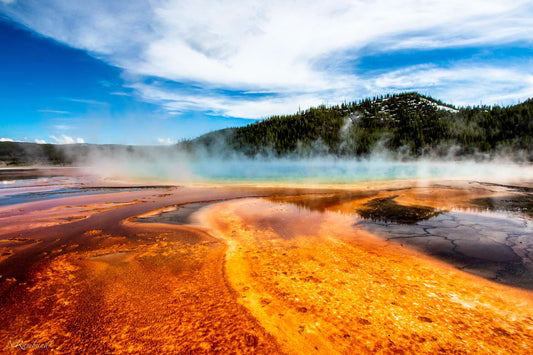Tire pressure is often overlooked, but can really affect the performance, comfort, and handling of your eBike. If you under-inflate an eBike tire, you risk damaging the tire or rim, plus increase the likelihood of flat tires; while over-inflating will make your eBike less comfortable and could even result in a tire blowing off the rim.
When the tire pressure is correct, your eBike will handle better, be more comfortable to ride, and can even have improved range. You don't need to be an expert mechanic to set the right tire pressure - with a little practice, anyone can do it. Let's review how to find the right tire pressure for your eBike, and how to adjust it.
Where to find the recommended tire pressure
Start by inspecting the tire sidewall - it will have a maximum PSI, or sometimes an acceptable range, printed on it. If you can't find it, you can also check with the manufacturer of your eBike to see if they have a recommendation.
Stay below the maximum PSI noted, and within the recommended range as well.
Pick the right tire pressure for the rider and terrain
There is no one tire pressure that works for all riders and eBikes. When the recommended PSI is a range instead of a specific number, think about the rider weight, riding style, and the terrain:
- Lighter, more cautious riders can get away with lower pressure.
- Lowering the tire pressure can provide an extra measure of suspension and comfort, especially for rough roads or gravel.
- Bigger, heavier riders need higher pressure to protect the tire, inner tube, and rim from damage.
- Save the highest tire pressures just for smooth-as-glass new pavement.
- When the weather is wet (rain) or there is debris in the road (leaves, painted stripes) lower tire pressure can provide a little more cornering grip.
It's fine to experiment within the published recommended range to find a tire pressure that works best for you. You may even find that it changes throughout the year as the weather and terrain change as well.
Benefits of proper tire pressure
- Your eBike is less fatiguing to ride, with less pain on your triceps, neck, and lower back.
- The tire and rim are less likely to be damaged.
- Your eBike may have improved range because the electric motor does less work.
- The ride is smoother and quieter.
What can go wrong with if tire pressure is too high?
- Your eBike corners poorly and chatters over bad road surfaces.
- Road shock and vibration is increased, which can fatigue your lower back and other muscle groups.
- Reduced grip in corners, because the tire cannot deform and flex to conform with the road or trail surface.
What can go wrong if tire pressure is too low?
- Very low tire pressures can allow the tire, inner tube, or rim to be damaged. Bikes with too low tire pressure are especially vulnerable to "snakebite" type flats - the type that occurs when you hit an obstacle, like a pothole or railroad tracks at high speed and the tube gets caught between the bicycle tire and rim.
- Lack of stability while cornering - the tire wants to fold over on itself when the rider corners aggressively. You've experienced this feeling if you've ever ridden a bicycle with a flat tire in a pinch. While the bicycle may technically be rideable, it doesn't handle as it should.
Bicycle tire pressure declines over time
It's important to be aware that tire pressure in all bicycle tires declines over time. This does not mean that you have a flat tire (puncture.) Air molecules are smaller than rubber, so it's normal and expected that air slowly escapes over time. That means you need to add air periodically.
If you haven't ridden in a long time and open your garage to discover your tires are low, try pumping them back up as a first step - you may find they hold air just fine. Plenty of serious cyclists check and inflate their tires before every ride! You don't have to do that, but twice a week would be a good interval for many people. If your eBike has been sitting unridden for a while, it will 100% need to be topped off before you ride.
Use the right bicycle tire pump
Tire pumps for bicycles come in two main varieties - the floor pump, which is big, heavy, and fast, and the miniature pump, which are much less efficient, but are small enough to take along on rides. A good floor pump should have a gauge built-in. This is less important on a small portable pump you take with you while riding - their main job is to add just enough air to get you home safely in the event of a flat.
You should keep a floor pump in the garage or closet and use it for inflating bike tires at home. They're very efficient and pump quickly. Save the "minipump" for emergencies on the side of the road or trail.
Don't use a "gas station" to inflate your eBike tires
The tire inflators at gas stations are designed for tires on cars and trucks that have much higher air volume. As a result, they move a LOT of air, quickly. This can result in over-inflating your eBike tire and even blowing the tire off the rim in extreme cases. Use one only in an emergency when you have no possible other alternative.




